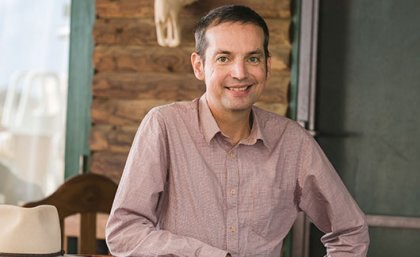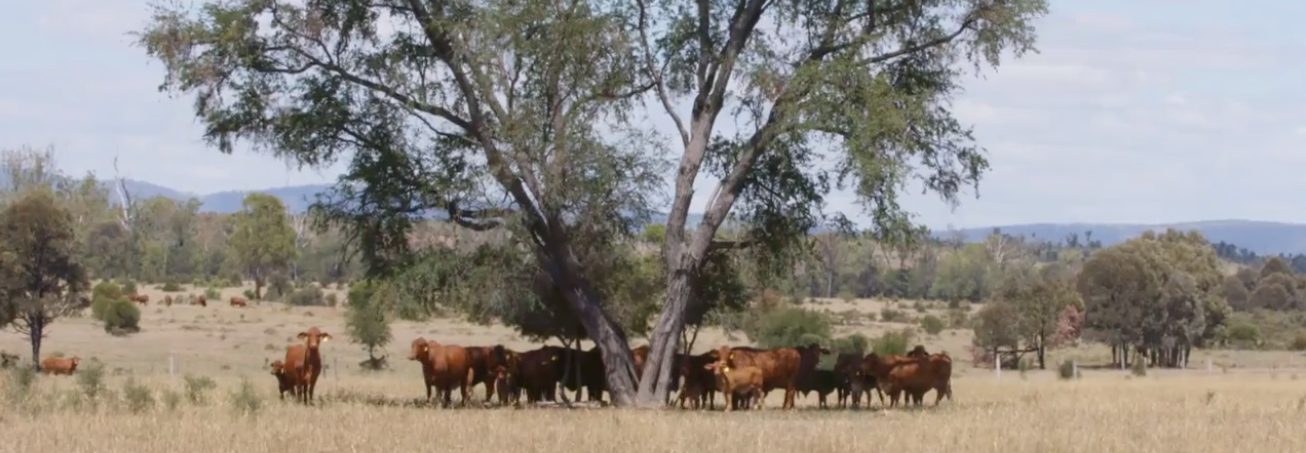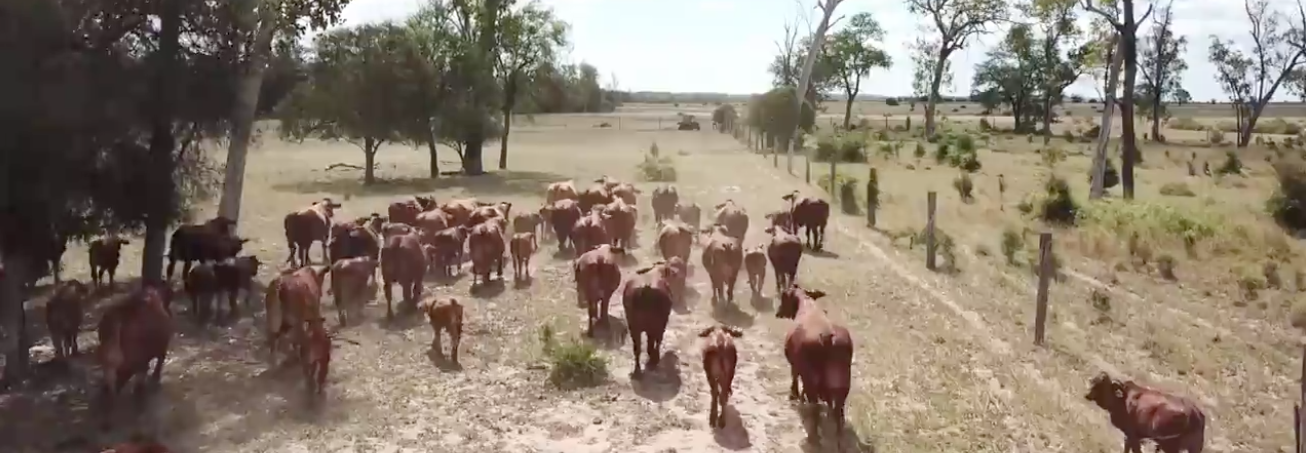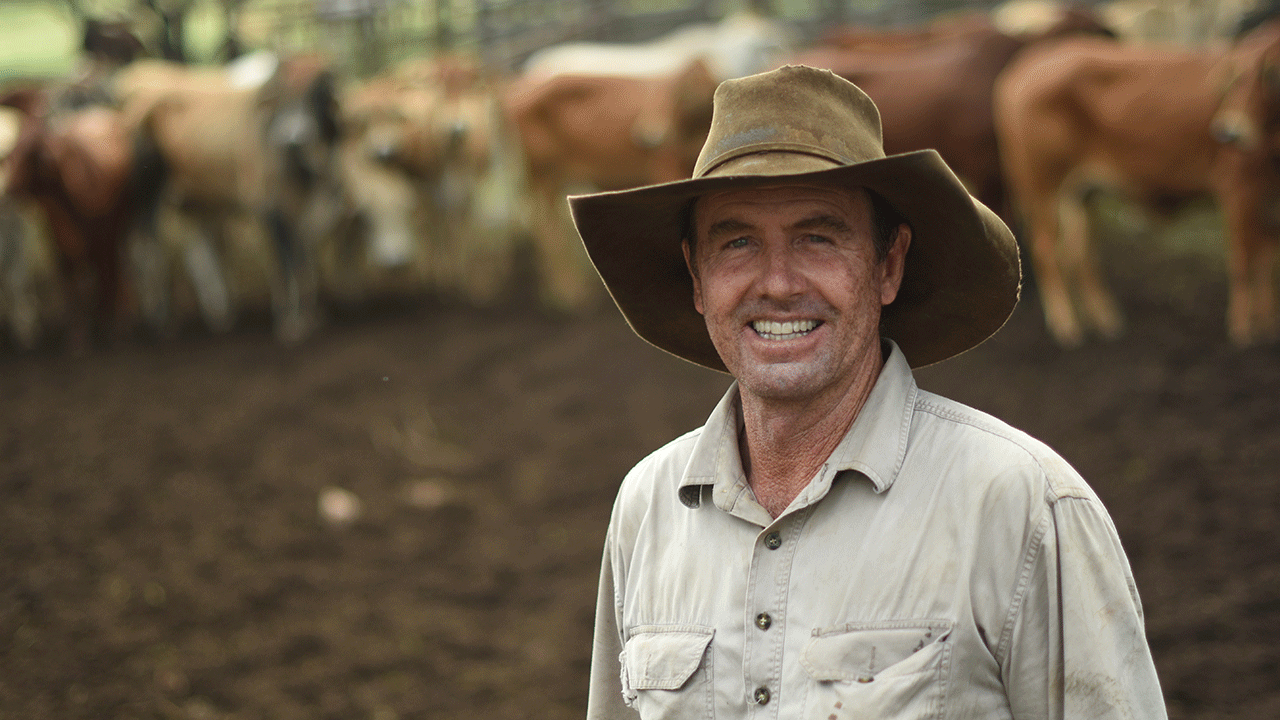Profitability is linked to fertility of cows for northern beef enterprises and can be substantially improved with new breeding methods based on cutting-edge genome technology.
The use of genome data is beginning to drive up the fertility of Australia’s northern cattle herds.
Differences in fertility can mean up to three extra calves over a cow’s lifetime, so potential gains are large.
Cows that produce more calves over their lifetime also have lower methane emissions per kilogram of beef, improving the sector’s sustainability while increasing productivity and profitability.
With global beef production forecast to fall 17 per cent in 2020-21, the gain is also important in shoring up the planet’s food security, given that Australia typically exports beef to 77 countries.

Spearheading these gains is Professor Ben Hayes, the researcher who first co-developed the technology – called genomic selection – that is now being used to make the fertility gains in beef cattle.
From his base at the Queensland Alliance for Agriculture and Food Innovation (QAAFI), a University of Queensland research institute supported by the Department of Agriculture and Fisheries, Professor Hayes and his team have previously applied this breeding innovation to drive up the health and productivity of various livestock, crops and pasture systems.
This technology works by predicting characteristics based on DNA data – essentially, realising the aspirations of researchers who sequenced the entire genome of humans, plants and animals to do this.
The vision has proven much harder to achieve than expected. That is primarily due to the fact that most traits are complex; many genes contribute to a trait and they interact differently in specific environmental conditions.
Genomic selection technology deals with that complexity using very large datasets of trait performance collected from collaborator herds.
“The substantial impacts from the harshness of the environment for northern cattle herds and the many breeds used by the sector can be dealt with, again, provided the right data is collected,” Professor Hayes says.
“For this project, we collected data for Brahmans all the way through to Angus cattle and all crosses in between.”
Professor Hayes describes two key ingredients to the project’s success. The first involves the herd owners themselves who made DNA samples available (via tail hairs) alongside important data about the performance characteristics of their animals, including ultrasound scans obtained by vets.

The second component involved an in-depth analysis of the DNA of these bulls and heifers in a process called genotyping, which is not dissimilar to ancestry DNA testing in humans.
“To date, we have genotyped 30,000 cattle using sets of 35,000 DNA markers that allow us to detect subtle genetic differences between animals,” Professor Hayes says.
“For key bulls that have contributed important genetics to breeding programs, we upped that to 700,000 markers, resulting in more than 21 billion data points to analyse.”
Advanced computational capabilities and algorithms are used to analyse the billions of data points in myriad combinations in order to contrast animal characteristics against genomic diversity (differences in DNA markers).
Done well, this analysis achieves correlations between DNA marker profiles and fertility traits that are used to inform breeding strategies. “It’s a numbers game,” Professor Hayes says.

“The larger the data, the more accurate the DNA profile tests will be to select the young bulls and heifers that produce the most fertile offspring. As the test is based on DNA, the bulls and heifers can be selected for breeding very early, potentially at birth – or even as embryos.”
Professor Hayes has now reached that stage with the fertility project. It took 54 participating herd owners pulling tail hairs to reach it, but the technology is now at the point where it is producing fertility predictions based on a DNA test, which producers can use to identify the most fecund parents.
Professor Hayes says the timing is particularly fortuitous, given that many northern cattle stations are currently rebuilding stock numbers following a run of adverse seasonal conditions.
“Part of the motivation for setting up genomic breeding for cattle herds is the opportunities to produce more beef from the same number of cows,” Professor Hayes says. “That has environmental, sustainability and profitability benefits for producers.”
However, he adds that none of this gain would have been possible without the involvement of the 54 collaborating producers.

Among these are Russell and Donna Lethbridge, who own the Werrington Cattle Co, based north of Hughenden in North Queensland. This region tends to experience high breeder mortality rates and low reproduction rates due to native pasture nutrition that is well below required levels.
Mr Lethbridge has sought to overcome these disadvantages by targeting fertility traits for the past 25 years, first using selective breeding and now with Professor Hayes’ breeding values.
“When they are selecting bulls, I think people are too obsessed with growth traits and don’t pay enough attention to fertility indicators such as moderate frame size, days to calving, calving ease and scrotal circumference,” he says.
“By targeting fertility, we have indirectly selected for adaptations to our environment and that allowed for a reduction in age and weight at puberty that has made a huge difference to productivity.”
With his Brahman heifers reaching puberty at 20 months, his herd is operating at 20 per cent above the district average for reproduction efficiency, highlighting the gains that are possible from the sector’s greater adoption of fertility-focused breeding values.
The project to give producers like Russell Lethbridge access to genomic selection technology was funded by MLA Donor Company, the Department of Agriculture and Fisheries in Queensland and The University of Queensland.
Research contact: Professor Ben Hayes, Director of Centre for Animal Science, Queensland Alliance for Agriculture and Food Innovation, The University of Queensland, E. b.hayes@uq.edu.au, T. +61 (0) 7 3346 2173 or M: +61 (0) 434 210 890.
Media contacts: Carolyn Martin UQ Media M: 0439 399 886 or Josh McIntosh, MLA Media M: 0404 055 490.
Download high-resolution photos and video
The Queensland Alliance for Agriculture and Food Innovation is a research institute at The University of Queensland, established with and supported by the Queensland Department of Primary Industries.



